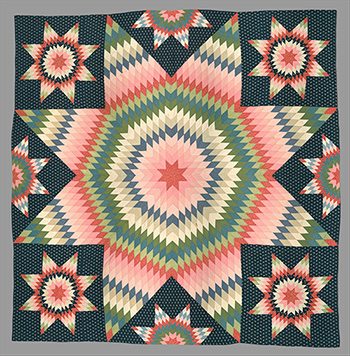Grantmaking Across the Spectrum of Innovation

By Dr. Kathryn K. Matthew

American society celebrates new ideas. We place value on creativity and the “next big thing,” which tends to get all the attention and much of the admiration. If you’ve ever watched a TED Talk, you’ll know what I mean.
As grantmakers, we at IMLS love a good idea, and we’re fortunate to receive many each year. After all, a good grant project starts with a good idea. But does “new” necessarily mean “good”? In grantmaking, a shiny new idea isn’t necessarily a shoo-in. But why?
“New” isn’t ever really new. To paraphrase Isaac Newton, we all stand on the shoulders of others, building on prior work and reinterpreting others’ stories. Taking on this perspective helps us to spot the next breakthrough or advancement while creating a climate for discovery, inclusion, and collaboration. What if new ideas emphasized how alike they are to earlier successes, not how much they differ from them? Instead, what about considering how your great idea takes what is known and tried and proposes innovations and improvements?
Emphasizing only the newness of an idea doesn’t help us evaluate where to invest grant dollars. We’re tasked with making smart choices in investing taxpayer dollars that help museums, archives, libraries, and communities flourish. A mix of factors come into play when making decisions, including the budget, risk, reach, success, and impact of a project idea. We ask how a dollar invested “over here” versus “over there” will make a difference, and how far it will go. We must consider whether that dollar should be spent on a brand-new idea, never before tested, or on the refinement or expansion of an existing idea, one that is already proven, tested, and evaluated.
Where along the spectrum of vibrant new idea to tried-and-true, proven principle does your project sit? Instead of going straight for “the new,” here are some questions to help you consider where your idea may fall in the continuum, and how you can polish, focus, and refine your concept.
Exploratory: You have a new, not well-defined idea to explore.
What is the challenge, problem, or opportunity? What is causing this situation?
How might you overcome the challenge? What approaches might you test?
Who are the target users and what would they value in a potential solution?
Why is this idea important to undertake now? Who are key stakeholders?
Piloting: You have a promising approach and want to conduct a pilot to test your assumptions and better understand how the approach works.
Can the project’s success be reached from multiple starting points?
How will you validate the feasibility of various possible approaches?
What does the project look like when successful? What are outcomes and indicators of progress?
Based on feasibility testing, what is a reasonable implementation plan and how will you evaluate that?
How will you ensure that you have time and resources to learn and reflect on the results of this phase, and then adapt your plans and goals accordingly?
Scaling: You have a valid approach with well-understood users, and now you want to test it more broadly.
Do you have capacity to scale the service/program?
What is the role of partners and implementers to help reach more users and achieve impact?
How well is this rollout working? What barriers exist?
Have you communicated the idea effectively?
What questions do adopters have about processes?
What are longer-term sustainability scenarios?
Enhancing: There is a well-established, widely used practice or technology, and you want to find out whether there is a need to enhance or rethink it.
How do you learn how others are innovating around this practice or technology? What approaches do you prioritize, if any, to respond to such changes in the field?
Has the definition of “value,” whether for professional or public communities, changed significantly?
Are there new ideas that justify reverting back to the earlier lifecycle phase to explore?
Is there a need to identify and enroll collaborators who can sustain the practice or technology and take it further?
Have you conducted a thorough review of the current strategy and determined that simple adjustments, with validation by stakeholders and users, will address the situation?
Identifying the phase for your idea and considering questions in these areas can help you more fully develop the project’s conceptual underpinnings for your planning. You’ll need to adapt these questions to your area of interest (such as collections stewardship, lifelong learning, community engagement, shared meta-data, professional development, workforce, etc.). You’ll also need to fully understand the maturity of knowledge, practice development, or user adoption currently in the field relating to your idea.
At IMLS, we like ideas. We like exploring ideas, testing ideas, sharing ideas, and enhancing ideas. You and your peers are our partners in powering and building innovative ideas that change practices in museums, archives, and libraries while also transforming communities across the nation. All we ask is for your best!
